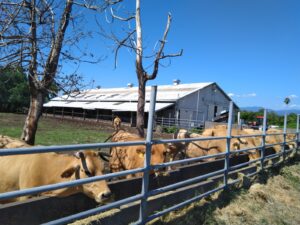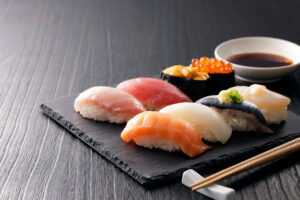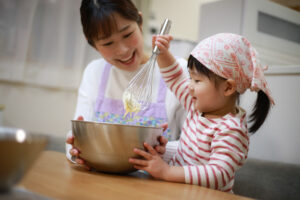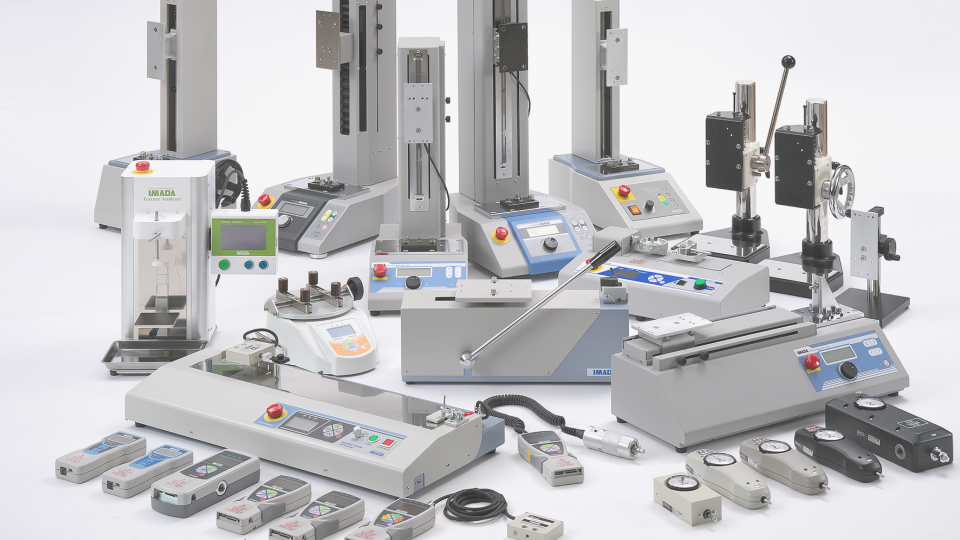Recently, I had an opportunity to try “Kata-Pan” = Hard-Bread, which is actually a Japanese version of Hardtack biscuits for the first time. Of course, the name already sounds dangerous. The hand feel felt so dense and very dry, like a piece of wood block, that I did not dare to bite with my teeth; instead, I crushed it into small crouton bits to check the taste and the texture in my mouth.
I thought this unique food must have been a bizarre product of a single company, so I casually Googled it, and to my surprise, I found that it is made all over Japan. I was surprised to learn that “Kata-Pan” was a common name. It seems the Japanese Hardtack biscuits currently available are considered unique hard snacks or preservative food made with flour and sugar with an interesting history and texture.
Looking at various websites, it seems that each type of Kata-pan has a scary degree of hardness. I am not sure if the hardness is good enough for preservative food, but as a force measurement manufacturer, I thought it would be interesting to measure and rank the hardness of the different types of hard bread! So, I decided to give it a try.
Kata-Pan Samples Measured
Along with the evolution of emergency food for disasters, with the high demand for variety of flavor and easy-to-eat Japanese-style preserved food, the popularity and the needs of the Kata-pan seem decreased, so only a few types are now available for purchase.
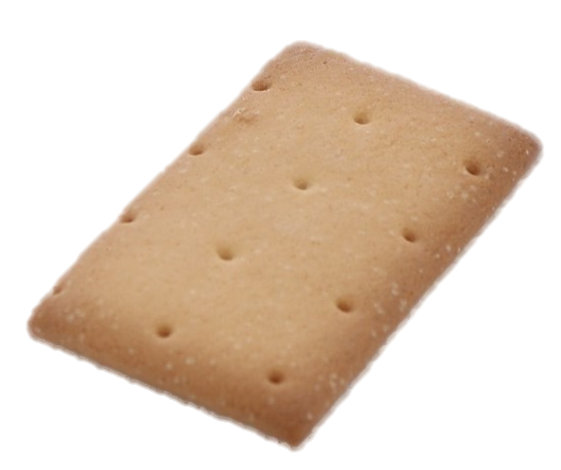 |  | 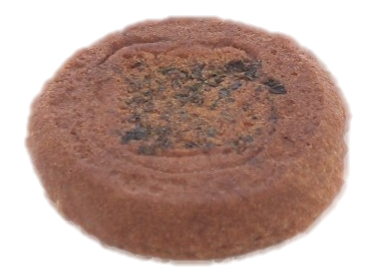 |  |
| Spina Corporation Kurogane (Iron) Kata-Pan | Daruma-ya Kata-Pan margarine flavor | Iga-Kaan Yamamoto Kata-Yaki (Hard baked) | Europan Kimuraya Guntai (Military) Kata-Pan |
| Originally made for the workers at Yahata Steel Works in the Taisho era (1912-1926). Available for purchase in various flavors. | A local specialty of Tsuruga, the tourist attraction site is embossed. The thinnest biscuit among the four we tested. | Originated from the Iga-Ninja survival food. Carried and consumed during the mission with a very traditional Japanese snack appearance. | The portable food, the reproduction of the piece of bread delivered to the 36th Infantry Regiment of the Army in Sabae. Sprinkled with sesame seeds. |
Measuring Method
Attach a force gauge with a chisel tip fixed to the shaft to a basic manual type test-stand, the handle turned for the chisel tip to stab each Kata-Pan, and the force value at the cracking moment (when a Kata-Pan solid piece is cracked into two or more separated pieces) is recorded to the force gauge. The higher value indicates a more rigid texture. Three samples from each manufacturer were measured, and the average values were used for comparison. We also measured the thickness of the samples as a reference value for comparison.

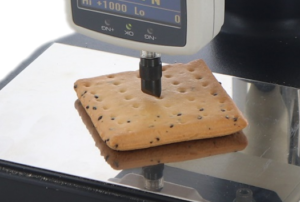
Which is the Toughest Kata-Pan?
The serious impressive measurement Data are as follows;
| Ranking | Brand | Product Name | Average Hardness(N) | Thickness (mm) |
| 1 | Iga-Kaan Yamamoto | Kata-Yaki (Hard baked) | 667.7N | 12mm |
| 2 | Europan Kimuraya | Guntai (Military) Kata-Pan | 353.3N | 9mm |
| 3 | Spina Corporation | Kurogane (Iron) Kata-Pan | 217.3N | 9mm |
| 4 | Daruma-ya | Kata-Pan margarine flavor | 131N | 4mm |
#1, The Hard Baked Kata-Yaki brand is said to have derived from the preservative food for the most famous Japanese Iga-Ninja (伊賀忍者). Ninjas are known for their military activities. They are spies and sold their services as mercenaries. Preserved foods like Kata-Yaki were necessary to proceed with their missions since they are small but nutritious. They say ninjas crack Kata-Yaki by the Tsuba (hand gurad) of their katanas when they eat it.

After the measurement, I munched on the broken pieces, but the solid feeling in my mouth was so intense that I could intuitively feel that I would have to suck on it for a while to be able to chew it. Can you imagine how hard is each type of bread? 1N (Newton), the force unit used here to compare hardness, is approximately 1.02 kgf (1 N = 1.02 kgf), so it takes approximately 13 to 67 kg of force to crush it. According to the Japan Dental Association, the force applied to the back teeth of an adult male when he clenches his teeth is a minimum of 27.5 kg, a maximum of 100 kg, and an average of 59 kg. As mentioned above, there are, of course, individual differences in the hardness of Kata-Pans, and in fact some pieces of Kata-Yaki and Guntai Kata-Pan showed a value of over 800N (=about 80kg), so the word of warning, do not eat them directly from the package as they are! Break them into a crouton size with a mullet-like tool or soak them in liquid like the beverages to soften before eating. This is also clearly stated on the individual packages on Eating Kata-Pan precautions.
After the measurements, I ate each of the Kata-Pans and found that they made me feel fuller than they appeared to be, which made me realize that they were indeed suitable for preservative and portable food. Each bisicuit was simple but flavorful, and some had toppings such as sesame and nori, and I felt that the gentle sweetness of the bread would be soothing to eat after light exercise or outdoor activities.
I want to conclude this article by expressing my respect and gratitude to all the manufacturers who have preserved the history and their recipes from generation to generation.
If you are interested in food hardness measurements, please refer to the link and contact us for more information and other options.
(Reference)
Japan Dental Association Theme Park 8020

